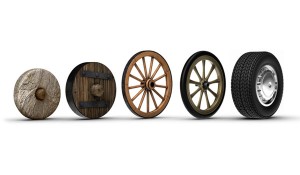A post from our student blogger Megan
If you have been following the MSPL blog in any depth this school year then you know that we have been working with scientists, engineers, mathematicians and other Notre Dame faculty to draft patent applications on their inventive creations. This is our thesis project. In December, we presented our findings and initial patent application claim drafts to our faculty advisors and inventors. Now we are on the path to drafting the finalized version of the patent application that covers our respective technology. This might seem simple, I mean, it is just filling out an application you say, right? No. In fact, the art of claim drafting and task of completing a patent application are a little daunting. But the end product is within sight and we are looking forward to achieving this goal.
One of the most challenging aspects of completing a patent application is how to capture the essence of an ever-changing underlying invention. Let me explain what I mean. I am fortunate enough to work with two incredibly bright, visionary biochemists and two brilliant, keenly astute engineers. The invention that these four faculty members supplied to me in August was a curious drawing of several component lab parts strung together that they said would change the face of cancer diagnostics. I diligently visited each inventor’s lab for a total of twelve times to have the essentials of this apparatus explained to me. When December rolled around, I had crafted a forty-five minute oral presentation that, I thought, tied my inventors’ ideas neatly together with the patent concepts we had been learning in the MSPL. Despite a few random butterflies, I was confident about my knowledge of the science and engineering principles, as well as the legal concepts that I needed to discuss. The words flowed like liquid gold from my mouth until I was stopped by one of the biochemists. It seemed that I had not perfectly captured the essence of this invention after all. My faculty advisors discussed with each other, and with me, what the bare bones of their concept was and I left satisfied with my performance but also with a feeling of slight uncertainty: according to my inventors, the invention that they envisioned had changed since August.
Two weeks into January I have now received more updated drawings of my inventors’ concept. These drawings are a world away from the originals that I was handed at the start of the school year. The idea is still the same, though. And although this means revamping my patent application-completion-strategy, this is the single most exciting thing that could have happened to me. You see, I’ve gotten to witness the creative genius of four talented inventors. I’ve also learned firsthand that inventive concept is not static, it is dynamic and evolving; one idea leads to an even better one. This has taught me patience and has ignited yet another deep level of fascination with the most basic understanding of how things work.
An idea that begins small will probably evolve. In patent law you have to just sit back, relax, and go with your inventors’ lab flow. Inventing is a mutable concept: one drawing leads to a plethora of new thoughts. You have to be ready, as a patent agent or attorney, to revise and rework your patent application to match what your inventor needs to patent. In the end, this tiny little lab evolution of one little idea just might be the next big revolution in science and engineering.
